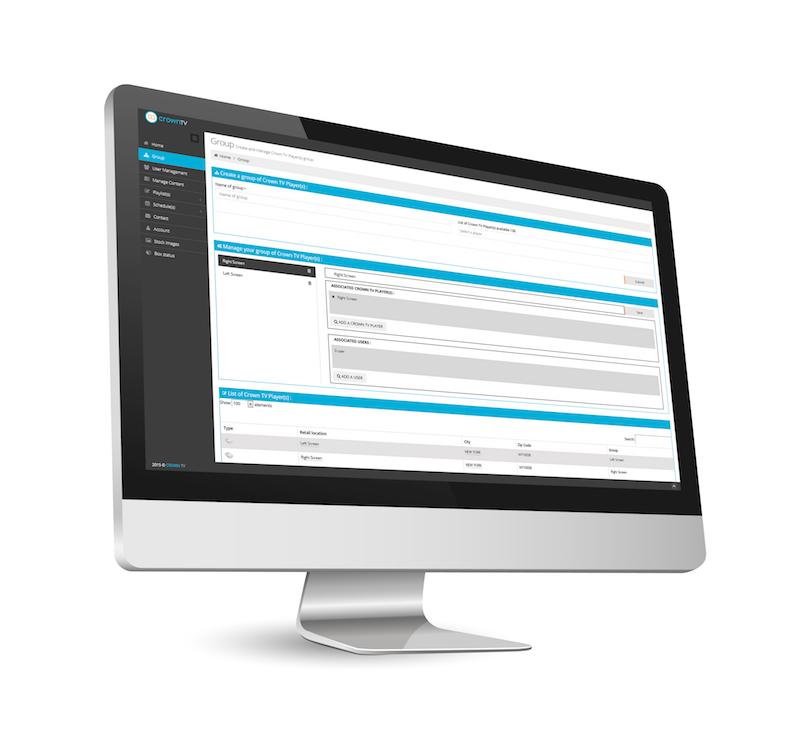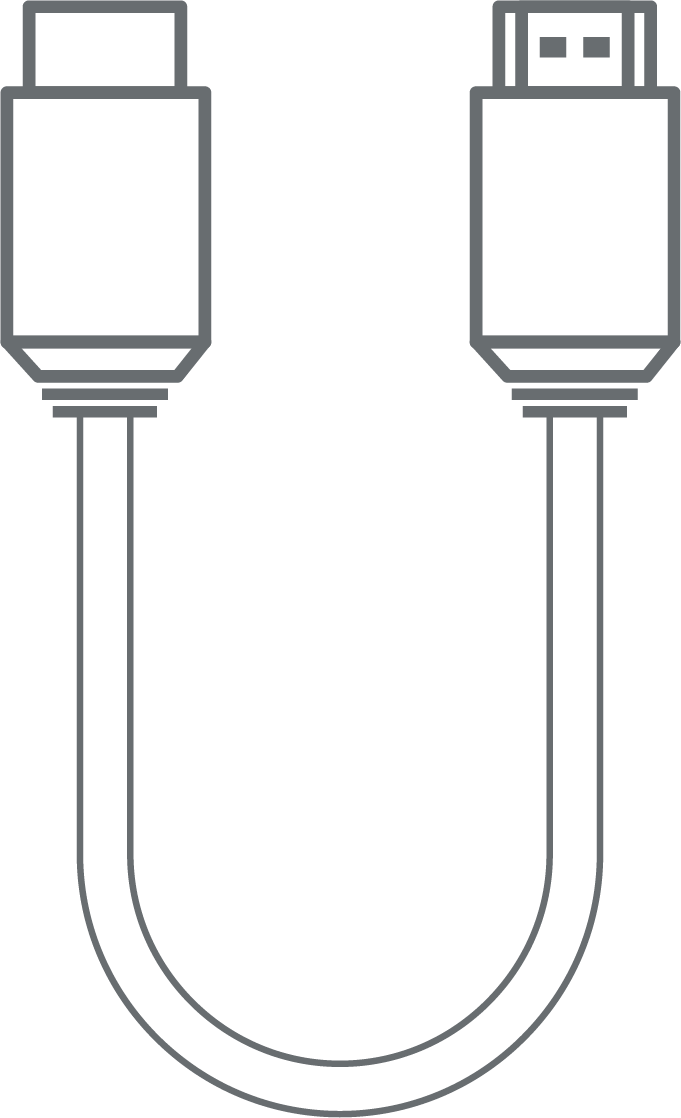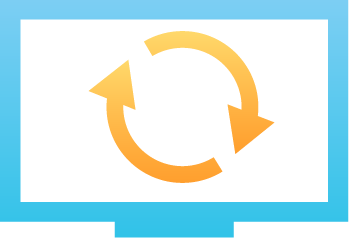What is cloud-based digital signage software? How does it differ from the alternatives? If you’re wondering this, you’re not alone.
 In a survey conducted by Wakefield Research for Citrix with over 1,000 participants, only 16% could properly define “the cloud”. 29% incorrectly defined it using a weather-related term. 51% thought stormy weather can interfere with the cloud (it can’t). And of the 54% of respondents who claimed they don’t use the cloud, 95% of them actually do.
In a survey conducted by Wakefield Research for Citrix with over 1,000 participants, only 16% could properly define “the cloud”. 29% incorrectly defined it using a weather-related term. 51% thought stormy weather can interfere with the cloud (it can’t). And of the 54% of respondents who claimed they don’t use the cloud, 95% of them actually do.
“The cloud” or cloud computing consists of a network of servers that host data and deliver services. An example of using the cloud would be backing up your iPhone to iCloud. The service delivery function of the cloud often consists of subscription-based software that is accessible online, otherwise known as Software-as-a-Service (SaaS).
Many modern digital signage solutions include cloud-based digital signage software for content management. Before purchasing a cloud-based solution, you may want to know:
–what it is and how it works
–how it differs from the alternatives
–its advantages, and whether they serve your needs
Here’s a rundown of each of these points.
What is cloud-based digital signage software?
Cloud-based digital signage software is a type of platform for managing digital signage content. Your content and data live on the cloud, and your digital signage provider maintains the servers that host it. It may also be called a cloud-based content management system (CMS), dashboard or interface.
With cloud-based digital signage software, you log into your dashboard on an internet-connected device (computer, tablet or smartphone) to manage your content. Through your dashboard, you can control any of your digital signage content or displays in real-time, no matter where you are – as long as you’re connected to the internet.

Compare this method to saving content from your computer onto a USB drive and plugging it into a TV. One method requires an internet connection, while the other doesn’t. One method allows you to manage content remotely, while the other doesn’t.

The exact mechanism behind cloud-based digital signage software can vary by provider, but the servers involved are always external (located off your premises and maintained by your provider). If you’re curious, ask your digital signage provider to explain their mechanism in more detail.
How does cloud-based digital signage software differ from the alternatives?
Hopefully you now have a general understanding of cloud-based digital signage software. But what are the alternatives?
One alternative is what’s called on-premise digital signage, which may be referred to as a “do-it-yourself” (DIY) digital signage solution. With this method, your business houses and maintains the servers that host your digital signage content. The servers must connect to an internal network to retrieve content. All the necessary servers stay on your premises, hence the term on-premise. The software that accompanies an on-premise solution may be third-party or built in-house.

Other alternatives and DIY methods include using a USB drive or streaming media device like Chromecast, Roku or Apple TV. In this article we’ll stick to comparing cloud-based and on-premise digital signage.
The main difference between cloud-based and on-premise solutions is the latter is a primarily internal solution while the former is an external solution. There are more differences, which we’ll now explain in terms of advantages and disadvantages.
What are the advantages of cloud-based digital signage software?
CrownTV offers cloud-based digital signage software because we believe it is the most easy-to-use, effective, versatile solution. It has numerous advantages over on-premise solutions, such as:

Easier Setup
Setting up a cloud-based solution involves just a few plugs and clicks, with no technical knowledge or IT specialists required. What it usually entails is plugging a digital signage player into a digital display, connecting the player to the internet, then logging into your dashboard to manage your content. The process is similar to setting up a Chromecast, Roku or Apple TV. Setting up CrownTV’s solution is even simpler, as the digital signage player arrives with your business’ WiFi information already programmed into it. It’s a true “plug-and-play” solution.
Getting started with an on-premise solution calls for more technical expertise and equipment. You’ll need to set up the servers and make sure everything connects to an internal network, all of which usually requires IT help. It’s also more time-consuming than setting up cloud-based digital signage software, which is easily up and running within minutes.

Less Maintenance
Hosting servers for an on-premise solution doesn’t end with setting them up. They require maintenance, often by a full-time IT department. Special facilities and equipment are required to house them, keep them cool, and physically and digitally secure them. If they break or go down, you’re responsible for getting them back up and running. You’ll also need to conduct software updates manually.
Maintaining cloud-based digital signage is a no-brainer, with automatic software updates, energy-efficient players and no need to maintain servers. If something goes wrong, your digital signage provider is there to help. Not having to host the servers yourself makes all the difference.

Remote Access
Perhaps the biggest advantage of cloud-based digital signage software is being able to manage your content remotely. You can be anywhere and still manage any display’s content, as long as you can log into your dashboard from an internet-connected device.
If you’re a business with multiple displays in multiple locations, the remote advantage is crucial to managing your digital signage. It gives you the power to target your messaging by displaying content when and where it matters. You have the freedom to change up your content as often as you’d like, allowing you to try out different strategies and adapt to changing situations.
With on-premise digital signage, you need to be where your servers and displays are. There are ways around it, but it won’t be as simple and flexible as cloud-based digital signage software.
Fewer and Lower Costs
With the heftier setup and maintenance required for on-premise digital signage comes higher costs. We won’t go into the numbers in detail, but it’s safe to say that servers and IT labor don’t come for free.
Cloud-based and on-premise digital signage differ the most in upfront costs. When setting up the latter solution, you’ll need to:
- buy servers and all associated equipment (fans, racks, etc.)
- pay whoever is setting up your servers for you
- purchase the software you’ll be using to manage your content (a one-time, upfront fee)
Cloud-based digital signage software is paid for on a monthly or annual subscription basis, so your upfront costs are much less.
On-premise digital signage doesn’t require monthly subscription or licensing fees, but the costs of electricity, storage space, security, and IT labor must be taken into consideration. You must also purchase and perform software updates manually. Updates to cloud-based digital signage software are free and automatic.
In summary, cloud-based digital signage software is easier and less expensive to set up, easier to maintain, and allows remote content management. If these are things you’re looking for in a solution, cloud-based is the way to go.
Conclusion
It should now be clear why cloud-based digital signage software is more popular and the only type of solution we offer here at CrownTV. Our clients wouldn’t have it any other way, and neither would we. “The cloud” may be the tech buzzword du jour, but don’t let it puzzle or intimidate you. It’s something that does what technology should do: make our lives easier.

